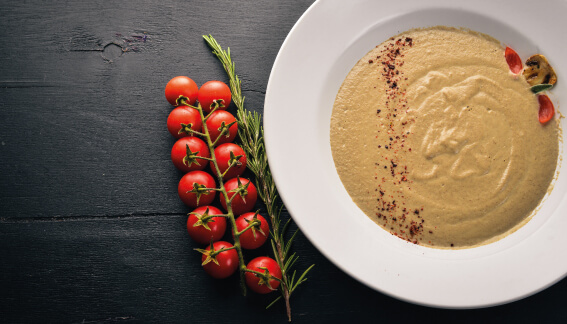
Appetising pureed dishes
Dysphagia sufferers experience discomfort when swallowing. The conditions mainly affects the elderly, ENT cancer patients, stroke patients and those with severe mental handicap.
Dysphagia or swallowing difficulties, require specially adapted meals to facilitate eating.
Minced or pureed meals render food easier to chew and swallow.
What is a pureed meal?
The issues encountered by dysphagia sufferers can be addressed by changing the consistency of the food served. Meals can be pureed, minced, semi-liquid or liquid. Of course, the consistency does not alter the nutritional value of the food, its taste or colour.
A pureed meal is composed of food of a pasty consistency, smooth, with no lumps. It can be presented as a puree, or in the form of a quenelle or a paté.
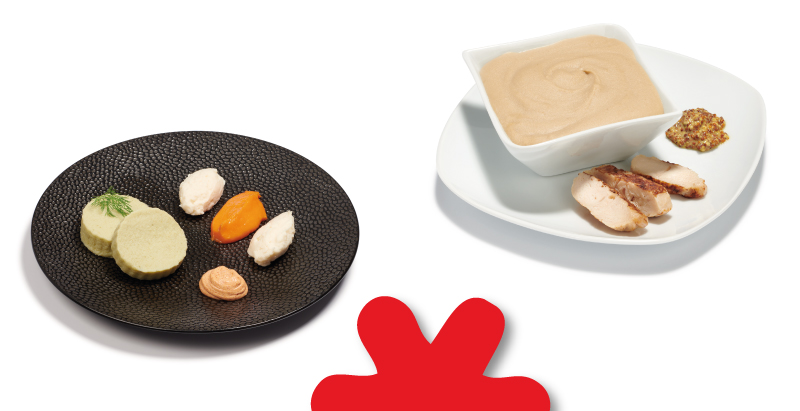
Making pureed meals requires considerable skill to balance nutritional value and appeal. Kitchen staff are trained in particular techniques to ensure their dishes combine both aspects. At home, the balance may be more difficult to strike. Carers and elderly patients are rarely familiar with the issues involved.
- Which consistency?
- Pureeing food
- What should I use?
- Can you puree all foods?
If the dish is not sufficiently smooth, food may go down the wrong way. Fragments of food are inhaled via the windpipe instead of being swallowed and end up in the lungs.
Aside from nutritional and culinary requirements, strict hygiene standards apply. Kitchens are full of resistant bacteria. The utensils most exposed to bacteria are mixers and knives.
In 2015, the French agency for healthcare establishments, the ANAP, published two guidelines on applying a standard to textures.
The International Dysphagia Diet Standardisation Initiative (IDDSI), introduced to help professional carers determine the correct consistency to be administered according to the patient’s condition, issues a guide defining 4 consistencies for food and 4 for drinks.
The wrong consistency, an inappropriate helping or a lack of appeal can all lead to malnutrition among the elderly.
Avoiding malnutrition in dysphagia sufferers
For most of us, the desire to eat is sparked by an appetising dish. A pureed beef bourguignon should still taste like a beef bourguignon. Good quality ingredients are essential when preparing meals.
Presentation also plays a key role in rendering a dish appetising. Mealtimes should always be pleasurable. Whether or not this is the case depends on several factors. Research suggests that physiological, cognitive and social processes come into play.
Physiological and cognitive processes
When we eat we use all our senses, in particular:
- Eyesight. Colours and presentation must be appealing. Reconstituted shapes help to recognise foods.
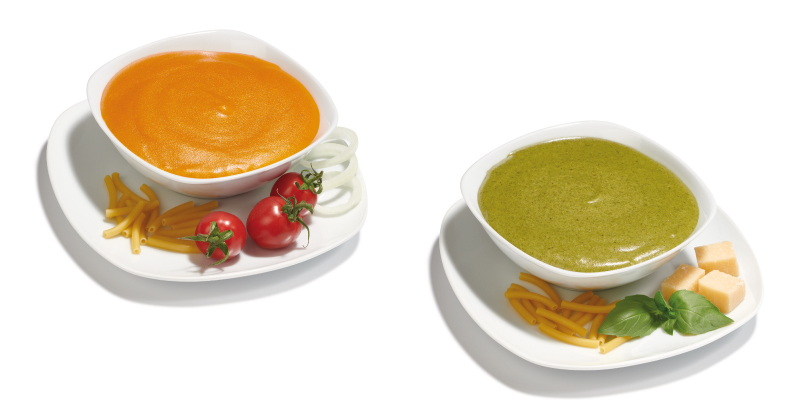
- Smell. Before we see or taste the dish, the smell stimulates our taste-buds and we anticipate the taste. Fish, soup, meat stews or chocolate cake have unmistakeable smells. A pureed dish should smell the same as the original dish.
- Eating is a social habit, associated with memories.
As far as possible, pureed dishes should have:
- agreeable shapes: use your imagination to shape food into quenelles, patés. Serve in circles or pipe purees. Differentiate meat and vegetables
- colours to stimulate the senses: avoid serving meat and vegetables of the same colour. Make sure the starter, dish and desert are of different colours. Use sauces and green or orange vegetable purees to brighten a dish.
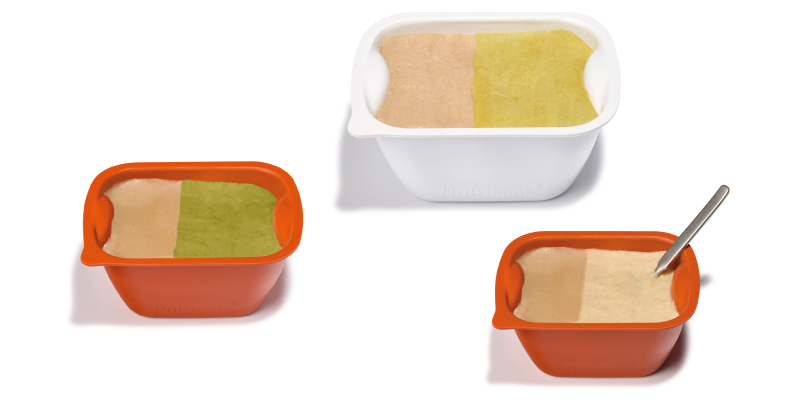
- Use strong tastes to counter the loss of sensitivity that often comes with age and/or ailments. It is not recommended to combine a restrictive diet with pureed meals as pureed meals can lead to a loss of appetite. Dishes should be tasty and appropriately seasoned with salt, herbs, spices and sauces. Avoid sprinkling chopped herbs, which can provoke choking.
Sociability
Mealtime atmosphere is as important as the food served. Meals symbolise sharing and togetherness.
Meals should be served in a friendly setting and a suitable environment (lighting, cutlery, crockery etc.).
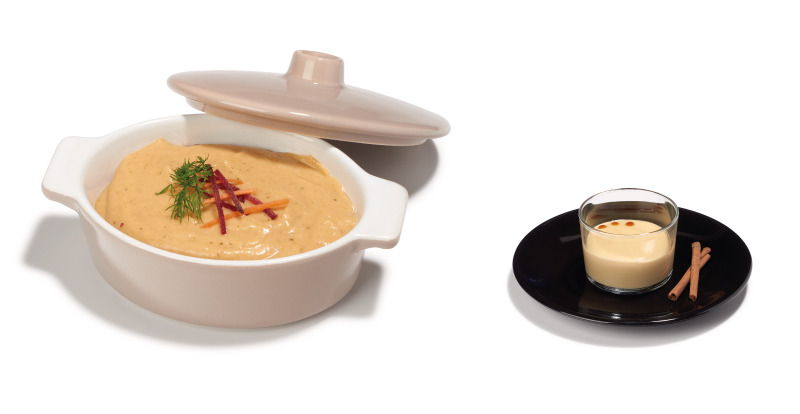
In conclusion, an appealing meal that stimulates the senses is more likely to be eaten.